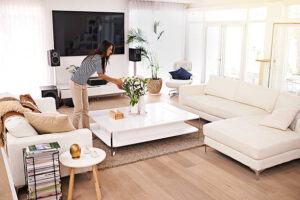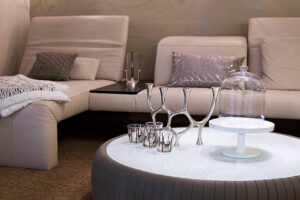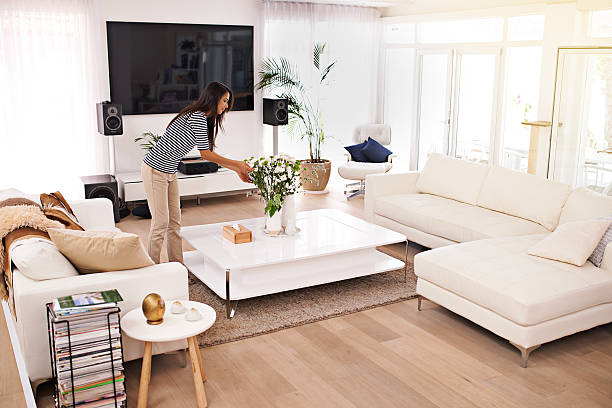
So, What’s the 3-5-7 Rule in Decorating Anyway?
Decorating can feel like a lot sometimes. You want your home to look good, feel balanced, and still reflect your personality, right? That’s where the 3-5-7 Rule steps in. It’s this simple little idea that designers often lean on when pulling a room together. It keeps everything feeling tidy and connected — without making your space look like a catalog.
So let’s talk about what this rule even means and how you can use it at home. Don’t worry, it’s not technical. Once you get the hang of it, it just makes sense.
What Does 3-5-7 Actually Mean?
This rule breaks your room down into — yep — three, five, and seven. It’s not math-heavy. It’s just a way to structure:
-
3 Areas – You divide your space into three parts.
-
5 Elements – Each area has five types of design stuff.
-
7 Colors – You stick to seven colors throughout the space.
Doing this keeps your room from feeling messy — but it also helps it stay interesting. Not too plain. Not too wild. Just right.
Let’s Break It Down
➤ Three Areas — Keep It Structured
Think of your room as having three zones. They could be:
-
Main area – Like your sofa and TV spot.
-
Activity zone – Maybe where you read, work, or do hobbies.
-
Transition zone – Like the walkway, hallway, or entry space.
Doing this helps break up your space naturally — especially in open floor plans where everything can feel like one big blur.
➤ Five Elements — Keep Things Interesting
Now for the fun part. Each zone should have five different things happening. That doesn’t mean five objects. It means five types of decor. Here are examples:
-
Furniture – Obvious, but essential.
-
Textiles – Cushions, rugs, curtains… all the cozy stuff.
-
Lighting – A mix of lamps, overheads, maybe fairy lights?
-
Art – Could be framed prints, a painting, or wall hangings.
-
Plants – A must. Even one or two adds life to a room.
Mix these in to avoid that “flat” feeling. A room filled with just furniture? It’ll feel cold. A few layered elements = instant warmth.
➤ Seven Colors — Keep It Cohesive
Yes, seven sounds like a lot, but once you count everything — walls, furniture, accents — it adds up fast. The trick is to limit yourself to seven shades max.
You can include:
-
Base colors – Like white, beige, grey.
-
Accent colors – Maybe navy, emerald, mustard… your pop of “wow.”
-
Tiny hints – For example, brass handles or wood tones.
That way, even if you change pillows or add seasonal decor, your overall palette still feels put together.
Applying 3-5-7 in Real Life

Let’s say you’re styling…
▸ Coffee Table
-
3 items: a candle, small plant, and a book.
-
5 items: throw in a tray and decorative bowl.
-
7 items: now add stacked books, a sculpture, maybe another candle.
▸ Mantel or Shelf
-
3 things: a vase, photo, and one little trinket.
-
5 things: add some books and another piece of art.
-
7 things: go full-on but spread it. Don’t clutter.
▸ Gallery Wall
-
3 pieces: clean and simple.
-
5 pieces: different sizes, maybe mix black-and-white with color.
-
7 pieces: for a bold look — just space them well.
▸ Console Table
-
3 items: try a plant, framed picture, and dish.
-
5 items: add candles and a sculpture.
-
7 items: include stacked books, vases, and a little bowl.
Common Mistakes People Make
Let’s be real, it’s easy to go overboard or miss the point.
-
Cramming too much – If it looks cluttered, it is. Even 3 things, if too big or too tight, can feel like 10.
-
Ignoring function – Your room has to work first. Pretty comes second.
-
Forgetting flow – Every room should feel like it connects to the next. If each room looks like a different person designed it, you lose that calm, continuous feel.
Color Tips: How to Choose Your Seven
Still stuck on color? Try this trick:
-
Pick 2 main colors – neutrals work best.
-
Choose 2 accent shades – something fun, something bold.
-
Add 3 support tones – wood, brass, natural textures, or muted versions of your accents.
Keep samples in hand when shopping, so you don’t accidentally go rogue and end up with 12 colors that don’t match.
Final Thoughts: Decorating Made Simple
The 3-5-7 Rule isn’t some strict formula. It’s a flexible way to create harmony in your space without overthinking every corner. It gives you permission to layer, to style with intention, and to know when to stop.
Start small. Group things in threes. Pick a color palette and stick to it. Pay attention to zones in your room. It’s honestly the easiest way to make your home feel like you, but still pulled-together enough that guests go, “Wow.”
